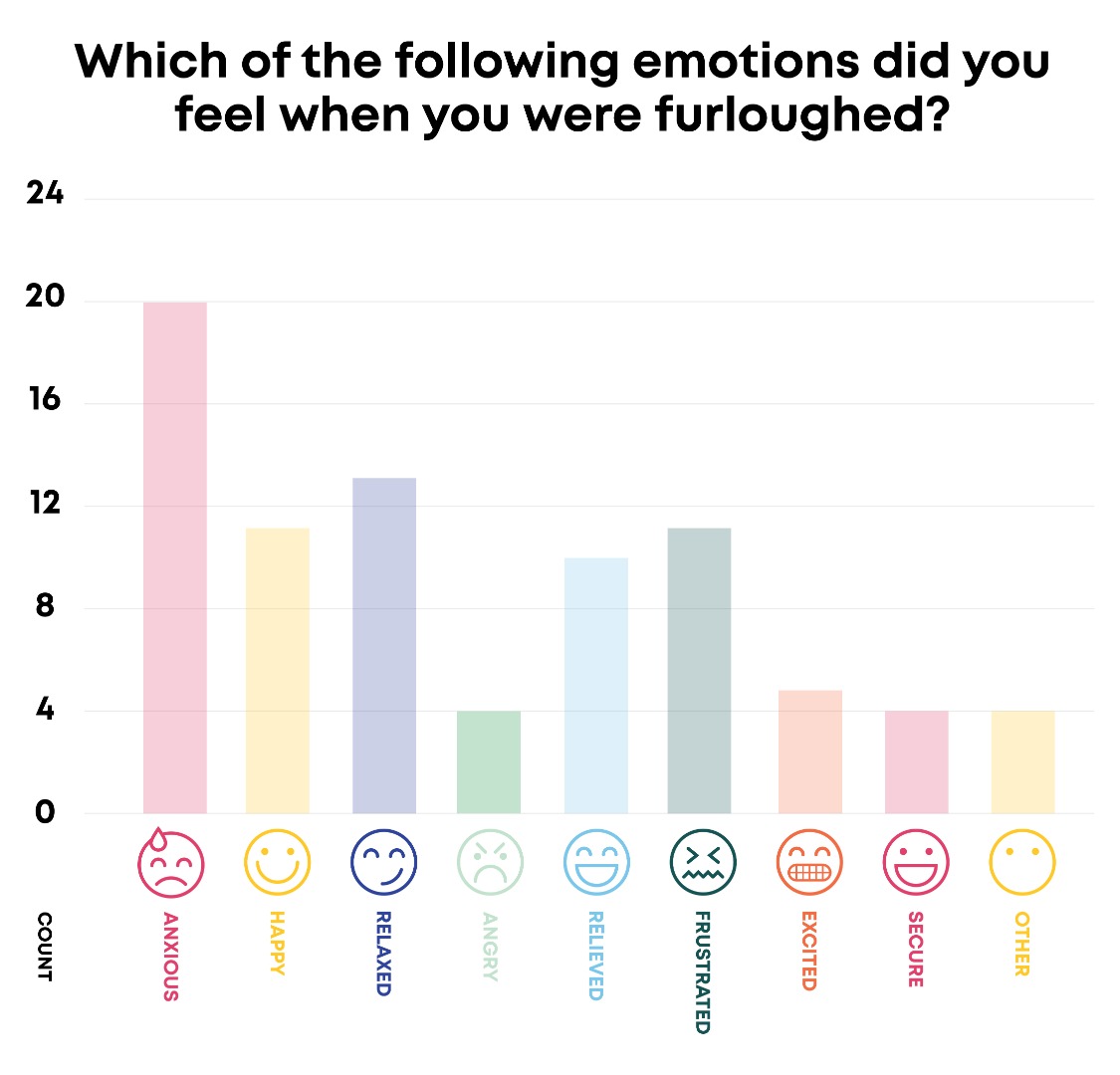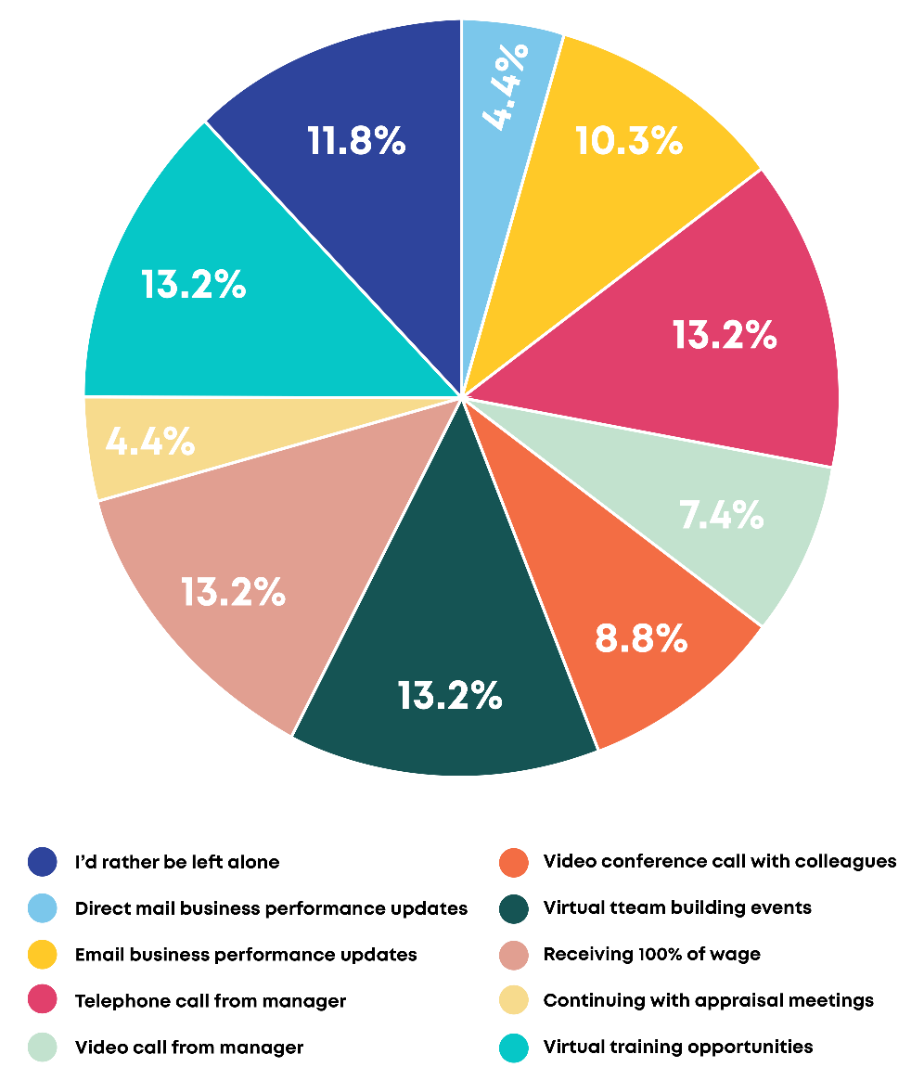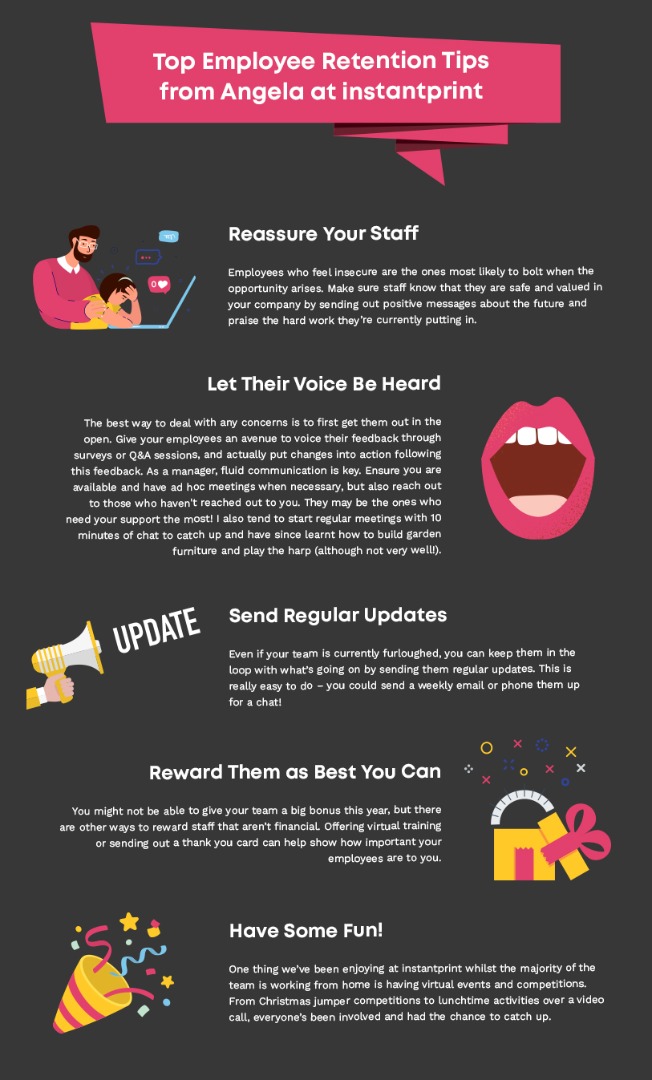It’s an understatement to say that the current workplace is not the same as it was in February 2020. If you went back to a pre-COVID lockdown workplace and gave employees a snapshot of how they were going to work during the pandemic, we’re not sure how many would believe you. Not only has it fast-tracked working from home – a trend that was already on the up – but we’ve also had to face furlough, pay freezes and even job losses due to the effects of Coronavirus.
On top of all this, many have decided to use the pandemic as an opportunity to launch their own business, with nearly half a million new UK businesses started in 2020 at the height of the pandemic.
Following all of this, we wanted to see how this had affected employee’s confidence in their place of work, whether their views have changed on how and where they work and how employers can keep engagement and job satisfaction levels high to retain staff during and after these unprecedented times (oh yeah, we said it!).
What we did: we conducted a survey of approximately 1000 UK workers to see how they felt about the way they’re working in the pandemic and what they really want from their employees to be happy in their jobs.
Here’s What We Found
Since February 2020, the number of payroll employees has dropped by 828,000. So, it probably comes as no surprise that just over a quarter (26%) of our survey respondents admitted to not feeling secure in their current role.
Although only 1 in 5 of UK workers has changed jobs since March 2020, half of all UK employees (49%) confessed they are currently looking for a new job. The staggering difference between the rate of those looking for a job vs those changing jobs could be down to a lack of job opportunities with many industries only just starting to re-open during spring and summer this year.
In our previous study, we found that many people had caught the start-up bug, with nearly 500,000 new businesses launched in 2020. This looks to be a growing trend this year too, as 40% claimed they are more likely to start their own business following the pandemic.
With 49% actively job hunting and a further 40% looking to start their own business, where does this leave current employers?
What Impact Has Furlough Had on Job Restlessness?
The government’s furlough scheme has been a blessing for many businesses struggling to pay their employees throughout the pandemic and has been extended until September 2021, meaning we haven’t seen the last of it yet.
Furlough allows employers to put employees on temporary leave and pays 80% of those employees’ wages, saving a lot of money for businesses that have faced financial difficulties.
According to Statista, 1.3 million employees have been furloughed as of 15th March 2021, so it’s something a lot of us are familiar with. In our survey, 37% of respondents had been furloughed at some point since the scheme was introduced last March.

Many of the respondents were furloughed at the time of the survey (20%), but the majority (35%) had been furloughed between 1-6 months. Nearly 15% had been furloughed for longer than 6 months.
To gauge employees’ emotions around being furloughed, we asked what emotions they experienced when placed on the scheme. An overwhelming 61% felt anxious about being furloughed, with 33% saying they felt frustrated.
However, some did see the brighter side, reporting that being furloughed made them feel relaxed (39%) and happy (33%). So, overall, there’s a real mixed bag of emotions over this scheme!
A lot of how employees feel about furlough came down to how engaged they felt with their place of work even while they were on leave.
A third of workers (33%) were less than impressed by their employer’s efforts to keep in touch during furlough leave, whereas only 21% felt that their employer did enough to keep them engaged from home.
What Can Employers Do to Retain Their Workforce Following Lockdown?
With 33% of employers not doing enough to keep in touch with furloughed staff, and potentially up to 49% of the workforce browsing job listings looking for an out, this doesn’t bode well for employers.
However, it’s not too late to change your employees’ minds by introducing a new retention strategy with what your employees want at the heart of it.
To help you out, we asked furloughed staff which of the following ways they’d like to be kept in the loop, and they revealed that the following would make them feel more engaged with work.

Our results revealed a four-way tie for the best ways to keep staff engaged whilst furloughed – with 13.2% suggesting topping up pay to 100%, telephone calls from their manager, virtual team building events and training sessions as the best ways to do this.
Although topping up employees’ wages may not be financially feasible for many, the majority of these techniques won’t require you to spend a penny!
However, we do also recommend keeping team events and the like optional, as almost 12% of furloughed staff would rather just be left alone whilst on leave.
But what about when we’re all back to ‘normal’ and working from home where possible isn’t the advice anymore?
Our survey found that a whopping 71% majority want to be able to work from home at least part of the time, with 35% of that majority wanting to work remotely permanently.
Top Employee Retention Tips from Angela at instantprint
We asked Angela, our Team Experience Operations Manager, for her top 5 employee retention tips for small business owners.
1. Reassure Your Staff
Employees who feel insecure are the ones most likely to bolt when the opportunity arises. Make sure staff know that they are safe and valued in your company by sending out positive messages about the future and praise the hard work they’re currently putting in.
2. Let Their Voice Be Heard
The best way to deal with any concerns is to first get them out in the open. Give your employees an avenue to voice their feedback through surveys or Q&A sessions, and actually put changes into action following this feedback. As a manager, fluid communication is key. Ensure you are available and have ad hoc meetings when necessary, but also reach out to those who haven't reached out to you. They may be the ones who need your support the most! I also tend to start regular meetings with 10 minutes of chat to catch up and have since learnt how to build garden furniture and play the harp (although not very well!).
3. Send Regular Updates
Even if your team is currently furloughed, you can keep them in the loop with what’s going on by sending them regular updates. This is really easy to do – you could send a weekly email or phone them up for a chat!
4. Reward Them as Best You Can
You might not be able to give your team a big bonus this year, but there are other ways to reward staff that aren’t financial. Offering virtual training or sending out a thank you card can help show how important your employees are to you.
5. Have Some Fun!
One thing we’ve been enjoying at instantprint whilst the majority of the team is working from home is having virtual events and competitions. From Christmas jumper competitions to lunchtime activities over a video call, everyone’s been involved and had the chance to catch up.

In conclusion, even if your team are feeling a little unsettled right now, that’s completely normal after the year we’ve all just faced and there are different strategies you can put in place to reassure them.
As we transition out of lockdown, this will reinforce a greater sense of stability in your workforce – but it’s important to maintain engagement during this change and beyond to keep your team happy and healthy. We hope these survey results and top tips help you nurture your team and erase any feelings of uncertainty and restlessness they might be feeling right now.

 (1) (1).png)

.png)

